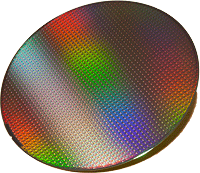Sony to buy CMOS fab used by struggling Nintendo, refit it for BSI sensor production
posted Thursday, January 30, 2014 at 4:12 PM EST

Last fall, semiconductor manufacturer Renesas Electronics announced plans to shutter a wafer fabrication plant in Tsuruoka, Japan. The plant, used to manufacture chips for struggling video game maker Nintendo, was apparently surplus to requirements thanks to sales of the Wii U and 3DS consoles failing to meet expectations. Now, a closure has been staved off, with consumer electronics giant Sony taking the plant off Renesas' hands and planning to use it to manufacture backside-illuminated CMOS image sensors.
According to the Image Sensors World blog, Sony will be receiving the plant less some of its equipment, which has been transferred to another Renesas location to manufacture the lesser quantity of chips Nintendo now needs to meet its revised sales forecast. This equipment will have to be replaced before Sony can begin using the fab, which has a 40nm process. Image Sensors World, citing an earlier report from Semiconductor Portal, also suggests that there is a split in opinions inside Sony as to whether the acquisition makes sense, given that the production line at Tsuruoka is not fully automated, and may thus not be able to churn out BSI CMOS sensors with the required efficiency.

Be that as it may, Sony's press release states that a "definitive agreement" has been reached and executed with Renesas. The company plans capital investment at the site over the next two fiscal years that should see it meet its goal of increasing total production capacity from 60,000 to 75,000 wafers per month. The new facility, to be renamed the Yamagata Technology Center, will join existing Sony image sensor fabs in Kagashima, Kumamoto, and Nagasaki.
More details can be found in Sony's press release.
(Silicon wafer image courtesy of .RGB. / Flickr. Used under a Creative Commons CC BY 2.0 license.)